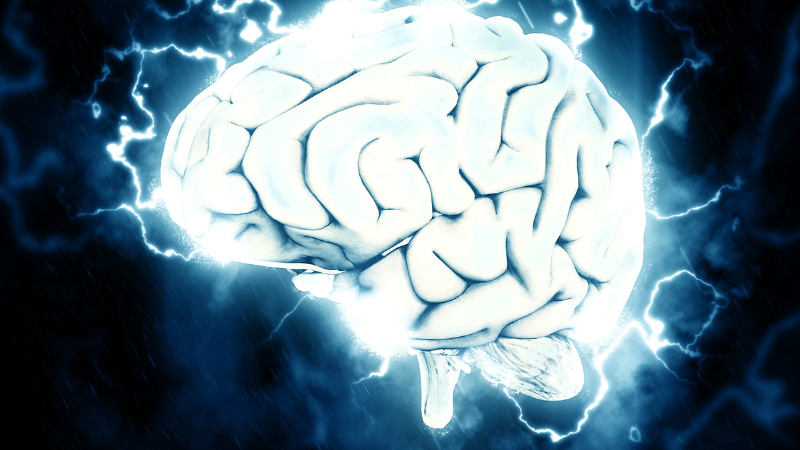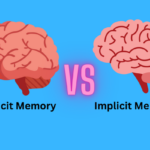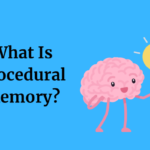What Is Echoic Memory: Unveiling the Acoustic Imprint of the Mind
Echoic Memory: Brief Overview Echoic memory is a type of sensory memory responsible for auditory information retention. Lasting a few seconds, it aids language processing and understanding. Study findings show its role in cognition and communication.

Introduction
The Intricate Tapestry of Human Memory
As humans, our lives are woven together by a complex web of memories, each thread contributing to the rich tapestry of our personal experiences. Memory, in all its facets, shapes our perceptions, guides our decisions, and defines our sense of self.
While the concept of memory is well-known and frequently discussed, there are subtler aspects of this cognitive phenomenon that often remain hidden beneath the surface. One such realm that has garnered relatively less attention is sensory memory—a fleeting yet crucial component of our memory system.
The Lesser-Known Realm of Sensory Memory
Sensory memory acts as a bridge between our immediate sensory experiences and the deeper layers of memory storage. It serves as the initial repository for the sensory information that bombards our senses every second of every day.
Before we can consciously process and interpret the world around us, our sensory organs—our eyes, ears, nose, skin, and tongue—capture an astonishing array of stimuli. These stimuli are then temporarily held in sensory memory, where they await further processing and potential transfer to more durable forms of memory.
Introducing Echoic Memory as a Crucial Component
While iconic memory—the visual snapshot of sensory information—has garnered its fair share of attention, another type of sensory memory quietly plays its role: echoic memory. Imagine a symphony of sound constantly enveloping us, from the gentle rustling of leaves to the rhythmic patter of raindrops.
Echoic memory, as the acoustic counterpart to iconic memory, captures these auditory experiences in a transient yet remarkably precise manner. It is the mental echo of the sounds that shape our environment.
In the following sections of this article, we will delve into the depths of echoic memory, exploring its nature, mechanisms, and significance in our daily lives. We will uncover the neurobiological foundations that underlie its operation, shed light on its role in language processing and comprehension, and examine its potential links to cognitive disorders.
Furthermore, we will discuss strategies for enhancing and training echoic memory, offering insights into how we can harness this remarkable cognitive phenomenon to optimize our memory processes. As we embark on this journey, we will uncover the intricate symphony of echoes that reverberate within our minds, contributing to the symphony of human memory.
Boost Focus Today: Elevate brainpower with the ancient Himalayan secret – enhance memory and mental performance.
Unveiling Sensory Memory
In the intricate labyrinth of human memory, sensory memory stands as the initial gateway through which the world around us gains access to our consciousness. Among its remarkable facets are two lesser-known components: iconic memory, responsible for briefly preserving visual snapshots, and echoic memory, the guardian of auditory experiences. In this section, we delve deeper into the realm of sensory memory to unravel the enigmatic nature of echoic memory.
Brief Overview of Sensory Memory
Sensory memory is a transient and fleeting reservoir that holds raw sensory information for a brief duration. Its purpose lies in buffering the constant influx of sensory stimuli, granting our cognitive processes time to organize, filter, and prioritize the information deserving of further attention. Within this role, iconic memory and echoic memory play pivotal roles, each specialized in capturing and preserving distinct types of sensory input.
Distinct Types of Sensory Memory
1. Iconic Memory: The Visual Snapshot
Iconic memory, often referred to as visual sensory memory, captures and retains the visual impressions that linger for a split second after an image disappears from view. This form of sensory memory allows us to perceive smooth motion in movies and seamlessly connect still images to create a coherent visual experience.
2. Echoic Memory: The Auditory Echo
Unlike the visual realm, auditory experiences are governed by echoic memory. This unique facet of sensory memory enables us to process and retain auditory stimuli, such as spoken language, music, and other sound-related information, even after the sounds themselves have ceased. Just as an echo in a canyon reverberates long after the source sound has vanished, echoic memory preserves the auditory echoes of our world, allowing us to make sense of and respond to complex auditory environments.
Echoic memory is a cornerstone of our ability to communicate, learn language, and comprehend intricate auditory details. By momentarily holding onto sound, it provides a temporal buffer that ensures our cognition can process auditory information before it fades into the recesses of our minds.
In the subsequent sections, we will embark on a deeper exploration of echoic memory, dissecting its defining characteristics, uncovering its underlying neurological mechanisms, and examining its vital role in various aspects of everyday life and cognitive functioning. For more memory articles, check out Explicit vs Implicit Memory: Which Dominates Your Recall?
The Nature of Echoic Memory

Defining Echoic Memory
Echoic memory, a lesser-known facet of sensory memory, serves as the auditory counterpart to iconic memory, providing us with a temporary repository for auditory experiences. Just as iconic memory captures fleeting visual snapshots, echoic memory captures the echoes of sounds, creating a mental resonance of the auditory world around us. This phenomenon plays a pivotal role in our ability to process and understand spoken language, enjoy music, and navigate our acoustic environment.
Role in Preserving Auditory Experiences
Imagine the echoic memory as a mental tape recorder that briefly captures and preserves auditory stimuli. It’s this very capacity that allows us to remember and comprehend spoken sentences even after they’ve been uttered. For instance, when engaged in a conversation, our echoic memory helps us retain the words we’ve just heard while our minds process their meaning and formulate responses. This transient retention enables seamless communication and interaction with our surroundings.
Characteristics and Duration of Echoic Memory
- Fading Echoes and Persistence of Sound: Echoic memory is characterized by its ability to retain auditory stimuli for a brief period after the original sound has ceased. This temporal persistence ensures that the auditory information continues to reverberate within our minds, granting us the chance to process and analyze it.
- The “Phonological Loop” Concept: Echoic memory is often linked to the concept of the “phonological loop” in working memory, a construct proposed by cognitive psychologists. This loop involves the repetition and rehearsal of auditory information in order to prevent its decay from the echoic memory. The phonological loop not only aids in retaining auditory information for a short duration but also facilitates its transfer to higher-order memory systems for more extended storage.
Understanding the intricacies of echoic memory not only sheds light on the mechanics of human cognition but also underscores the importance of auditory experiences in our daily lives. Whether we’re engaging in conversations, enjoying our favorite tunes, or simply navigating the world around us, echoic memory plays an essential role in shaping our perceptions and interactions.
In the following sections, we will delve deeper into the neurological mechanisms that underlie echoic memory, its impact on language processing, and its connection to cognitive disorders.
Echoic Memory Mechanisms
Neurological Underpinnings
Echoic memory, like other facets of human memory, finds its roots in the intricate workings of the brain. The orchestration of auditory experiences and their transformation into lasting memory traces involve a symphony of neural activity.
- Brain Regions Associated with Auditory Processing: Echoic memory owes its existence to the collaboration of several brain regions that form the auditory processing pathway. The primary auditory cortex, nestled within the temporal lobes, serves as the initial destination for sound signals. Here, incoming auditory stimuli are decoded and processed, laying the foundation for subsequent memory formation.
- Neuronal Pathways and Connections: The journey of auditory information doesn’t end in the primary auditory cortex. Neuronal connections extend beyond, linking various brain regions responsible for higher-order processing. The hippocampus, known for its role in memory consolidation, collaborates with the auditory cortex to weave fleeting echoes into the tapestry of memory.
Encoding and Storage of Auditory Information
The process of transforming ephemeral auditory stimuli into enduring memory traces involves a delicate interplay of various cognitive mechanisms.
- Transient Nature of Sensory Input: Auditory stimuli, by their nature, are transient. Sounds arrive in rapid succession, each competing for attention and processing. Echoic memory steps in to briefly preserve these sounds, allowing the brain to dissect and analyze them before they vanish into the abyss of forgotten sensory experiences.
- Conversion to Short-Term and Long-Term Memory: While echoic memory serves as the initial repository for auditory information, its contents don’t linger indefinitely. Just as a fleeting echo gradually fades, so does the trace in echoic memory. However, if deemed relevant or significant, auditory information can be transferred to the short-term memory for further processing. From there, the journey continues, with some auditory memories finding a lasting abode in the realms of long-term memory.
Echoic memory thus operates as a bridge between the immediacy of sensory experiences and the enduring legacy of long-term memory. Its fleeting nature, while potentially limiting, is essential for efficient processing and prioritization of auditory stimuli.
Understanding the intricacies of echoic memory mechanisms not only enriches our comprehension of cognitive processes but also lays the groundwork for potential interventions and therapies targeted at enhancing auditory processing, memory retention, and overall cognitive functioning. As neuroscience advances, so does our grasp of how the mind shapes and safeguards the echoes of our acoustic world.
Echoic Memory’s Role in Everyday Life

Echoic memory, often overshadowed by its visual counterpart, plays a crucial role in our daily experiences and interactions with the world around us. This auditory component of sensory memory is responsible for capturing and preserving the sounds that surround us, forming an acoustic imprint that shapes our comprehension, communication, and cognitive processes.
Impact on Language Processing and Comprehension
- Language Acquisition in Children: Echoic memory is particularly significant during the early stages of language development. Infants and young children rely heavily on their ability to store and recall auditory information as they learn to recognize phonetic patterns, syllables, and eventually words. The echoes of caregivers’ voices and the auditory cues from their environment contribute to the gradual construction of a linguistic framework.
- Listening Comprehension in Adults: As we grow, echoic memory continues to facilitate our language skills. When engaging in conversations, attending lectures, or simply absorbing information from audio sources, our capacity to hold onto and process auditory stimuli supports our understanding and retention. Echoic memory allows us to string together spoken words, decipher meanings, and mentally organize the information we receive.
Selective Attention and Filtering
- Cocktail Party Effect and Focus on Relevant Sounds: Echoic memory contributes to our ability to focus on specific auditory cues amidst a cacophony of sounds. The “cocktail party effect” refers to our remarkable skill of tuning into a single conversation while filtering out background noise and competing voices. This phenomenon relies on the transient storage and rapid processing capabilities of echoic memory, enabling us to selectively attend to the most relevant auditory inputs.
- Filtering Out Background Noise and Distractions: In various environments, such as bustling city streets or noisy offices, our echoic memory aids in distinguishing essential sounds from the surrounding clamor. This function is essential for maintaining concentration, responding to alarms or warnings, and adjusting our behavior based on auditory cues.
The intricate dance between echoic memory and our cognitive processes underscores the role of sound in shaping our perception of the world. This interplay impacts not only how we communicate and comprehend, but also how we navigate complex auditory landscapes, adapt to changing environments, and engage with our surroundings.
As we delve further into the study of echoic memory, we uncover its implications for cognitive disorders and the potential for enhancing our auditory memory capacities. Exploring its links to auditory processing disorders and cognitive decline provides insights into therapeutic interventions and memory enhancement strategies. By acknowledging the influence of echoic memory on our daily lives, we gain a deeper appreciation for the symphony of echoes that mold our mental experiences.
Experience the Advantage: Elevate clarity and memory with Himalayan “Biological Gold” – tap into nature’s wisdom.
Echoic Memory and Cognitive Disorders
Potential implications for auditory processing disorders
Auditory processing disorders (APDs) encompass a range of conditions where individuals struggle to accurately process auditory information despite having normal hearing sensitivity. Echoic memory plays a pivotal role in these disorders, as it serves as the initial gateway through which auditory information is processed before being further analyzed and interpreted. In individuals with APDs, the efficiency of transferring auditory information from echoic memory to subsequent memory stages can be compromised, leading to difficulties in speech recognition, sound discrimination, and following verbal instructions.
- Auditory processing disorder (APD) and echoic memory: Auditory processing disorders are often rooted in deficits in echoic memory functions. Individuals with APDs may exhibit challenges in quickly and accurately capturing and retaining auditory cues, which can result in misunderstandings, decreased language comprehension, and difficulty engaging in conversations, particularly in noisy or complex auditory environments. The intricate interplay between echoic memory and subsequent processing stages underscores the need for targeted interventions and therapies that focus on enhancing echoic memory function in these cases.
- Challenges in processing and remembering auditory stimuli: For individuals with APDs, the fleeting nature of echoic memory can exacerbate the difficulties they face. The limited duration of echoic memory may lead to incomplete or distorted auditory representations, making it harder for them to follow conversations, recall spoken instructions, or differentiate between similar sounds. This can significantly impact academic, social, and professional aspects of their lives, necessitating specialized support and strategies to bolster their echoic memory capabilities.
Link to cognitive decline and aging
As the sands of time shape our cognitive landscapes, the echoes of auditory memories also undergo changes. Advancing age brings about shifts in sensory and memory systems, including echoic memory. Research suggests that as individuals age, there may be a decline in the efficiency of echoic memory, contributing to challenges in processing and recalling auditory information.
- Changes in echoic memory with advancing age: While not all older adults experience a significant decline in echoic memory, it is recognized that changes in auditory processing can occur with age. Reduced neural plasticity, changes in sensory organs, and alterations in brain structures can impact the fidelity and persistence of auditory traces in echoic memory. This can lead to misunderstandings, difficulty following rapid speech, and an increased vulnerability to auditory distractions.
- Implications for dementia and related conditions: The relationship between echoic memory and cognitive decline, particularly in conditions like dementia, is an area of ongoing investigation. As neurodegenerative disorders progress, they can affect various cognitive functions, including sensory processing. Understanding the precise link between echoic memory and dementia could hold potential for early diagnosis and the development of interventions that focus on preserving auditory memory function.
In summary, echoic memory forms an intricate piece of the cognitive puzzle, influencing our ability to perceive, process, and remember auditory information. Its role in auditory processing disorders and aging underscores its significance in maintaining effective communication and cognitive well-being. By unraveling the complexities of echoic memory and its connections to cognitive disorders, we pave the way for innovative therapies and strategies that can enhance auditory processing and enrich the lives of those affected.
Conclusion
In the intricate symphony of human cognition, echoic memory emerges as a hidden marvel, weaving its auditory echoes into the tapestry of our mental world. As we’ve journeyed through the corridors of sensory memory and delved into the enigmatic realm of echoic memory, we’ve come to recognize its profound significance in shaping our perception, language processing, and cognitive well-being.
Echoic memory, the faithful guardian of auditory experiences, plays an indispensable role in our lives. From the enchanting babble of a child’s first words to the melodious resonance of a favorite song, echoic memory enables us to capture, process, and comprehend the rich auditory landscape that surrounds us. It whispers secrets of our past, guides our present interactions, and influences our future connections.
This acoustic imprint of the mind not only enriches our sensory experience but also holds potential insights into understanding and addressing cognitive disorders. The link between echoic memory and auditory processing disorders opens doors for innovative therapeutic interventions, offering hope to those struggling with sensory integration challenges. Furthermore, its subtle dance with the passage of time has implications for the study of aging, dementia, and the intricate relationship between memory and emotions.
As we contemplate the future, the depths of echoic memory beckon us toward uncharted territories. The frontiers of neuroscience promise to unveil the intricate mechanisms that underlie this auditory wonder, paving the way for transformative breakthroughs in cognitive science. The fusion of echoic memory with other sensory cues and mnemonic techniques holds the promise of enhancing our memory capabilities, potentially revolutionizing how we learn, communicate, and remember.
In our quest to unravel the mysteries of the human mind, echoic memory stands as a testament to the complexity and beauty of our cognitive architecture. Let us embrace the echoes that linger, the whispers that shape our understanding, and the melodies that compose the soundtrack of our lives. As we continue to explore the interplay of memory, perception, and cognition, let us not forget to lend an attentive ear to the echoes that bind us to the world around us.
Frequently Asked Questions
FAQs About Echoic Memory
Q1: What is echoic memory, and how does it differ from other types of memory?
A: Echoic memory refers to a subtype of sensory memory responsible for temporarily holding and processing auditory information. Unlike iconic memory, which captures visual snapshots, echoic memory specifically deals with sound-related experiences, allowing us to retain and process spoken words, sounds, and melodies for a brief period before they fade away.
Q2: How long does echoic memory last, and what factors influence its duration?
A: Echoic memory typically lasts for a short duration, ranging from a few seconds to around 3-4 seconds. The exact duration can vary based on factors like the complexity of the auditory stimulus, the individual’s level of attention, and the presence of competing sounds. Under optimal conditions, echoic memory can persist for slightly longer periods, enabling the brain to process and comprehend auditory information.
Q3: Can echoic memory be enhanced or trained?
A: Yes, echoic memory can be enhanced through various techniques. Active listening, mindful hearing, and repeating auditory information can help reinforce the imprint of sounds in echoic memory. Associating auditory cues with visual or emotional elements can also improve recall. Engaging in cross-modal memory training, where auditory information is connected with other sensory cues, can further optimize echoic memory’s performance.
Q4: How does echoic memory impact language processing and communication?
A: Echoic memory plays a vital role in language processing and communication. It allows us to comprehend spoken language by retaining words and phrases long enough for our brains to process their meanings. This is particularly crucial in scenarios with background noise or rapid speech. For instance, echoic memory enables us to piece together sentences during conversations, ensuring effective communication even in challenging auditory environments.



